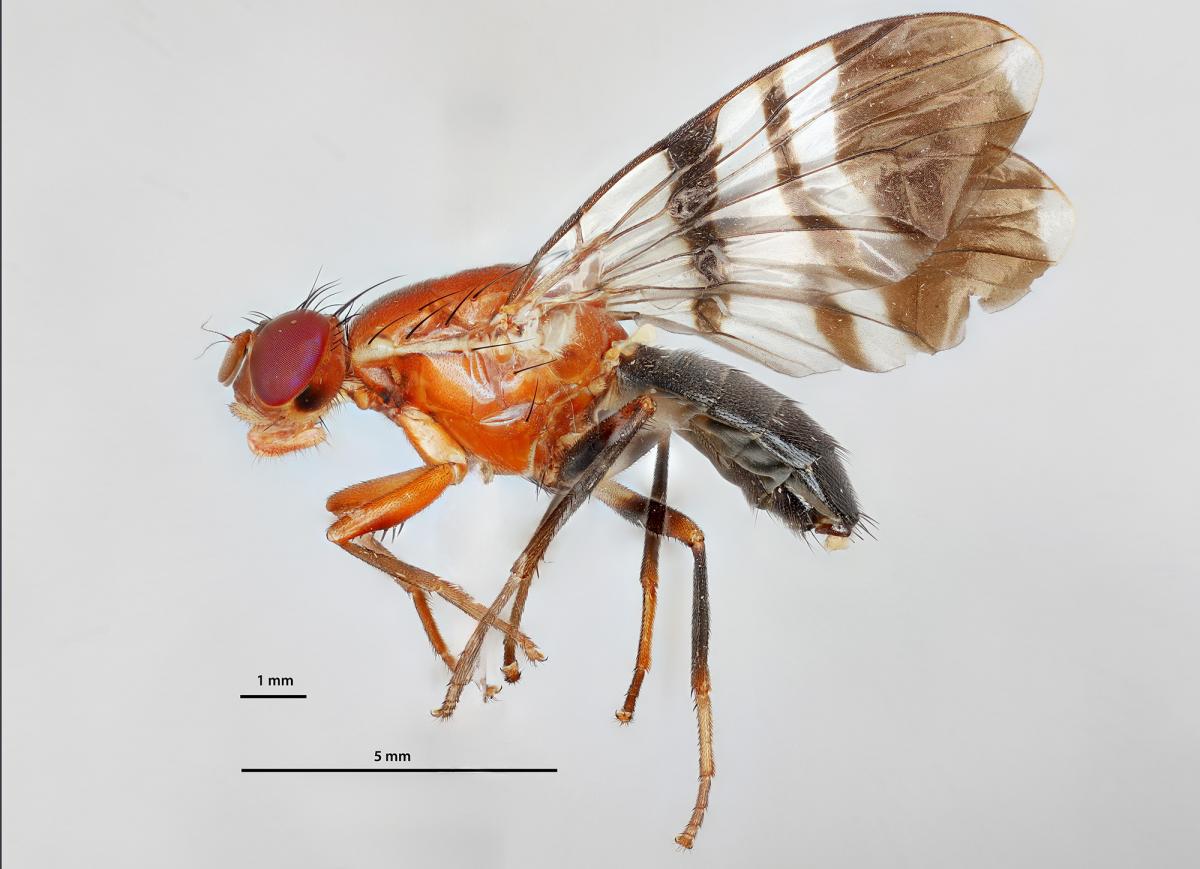Celidodacus colonarium (Diptera: Tephritoidea: Tephritidae: Trypetinae: Euphrantini)
Tephritidae, the true fruit flies, comprise a large group of flies that attack healthy fruits (including commercially important ones) and other plant parts. They are only distantly related to the other “fruit flies” belonging to the family Drosophilidae, that are best known for supplying a laboratory model for genetic, evolutionary and ecological studies (see Drosophila melanogaster). With few exceptions drosophilids feed on rotting plant material. However, one very important exception is Drosophila suzuki which is a pest of soft berries and their relatives (cherry, plum, blueberry, peaches, etc.)
Worldwide there are almost 5000 species of Tephritidae. They are colourful and nearly all have intriguing patterns of bands and spots on their wings. Viewed from the back, in many species the bands appear to mimic spiders and there is some evidence that they serve to frighten away potential predators approaching from behind. Many tephritids are attractive flies with yellow, orange and red areas on the body. The image of the Insect of the Week (Celidodacus colonarium) is a nice example.
The genus Celidodacus attacks the stems of the plant families Asteraceae (sunflower family) and Apiaceae (carrot family) but is of no importance commercially. On the other hand, many tephritid genera contain species which are serious pests of cultivated crops. They are the most important pests of mango in Africa. Ceratitis cosyra, the mango fruit fly, and the recently invasive oriental fruit fly, Bactrocera dorsalis are particularly damaging. There is evidence that Bactrocera dorsalis is aggressively displacing C. cosyra as the number one mango pest. Other important species in the Afrotropical region include Dacus species which are partial to Cucurbitaceae, and several Ceratitis species, Ceratitis rosa, Ceratitis fasciventris, Ceratitis anonae and Ceratitis capitata that are partial to soft fruits (plums etc.). Ceratitis capitata is considered one of the most important fruit fly pests in the world. In Kenya, C. capitata is extremely polyphagous. In one study it was reared from 55 different species of indigenous fruit. These reservoir hosts make it difficult to sanitize small farms in areas suitable for mango production.

Credits: Dr Robert Copeland

